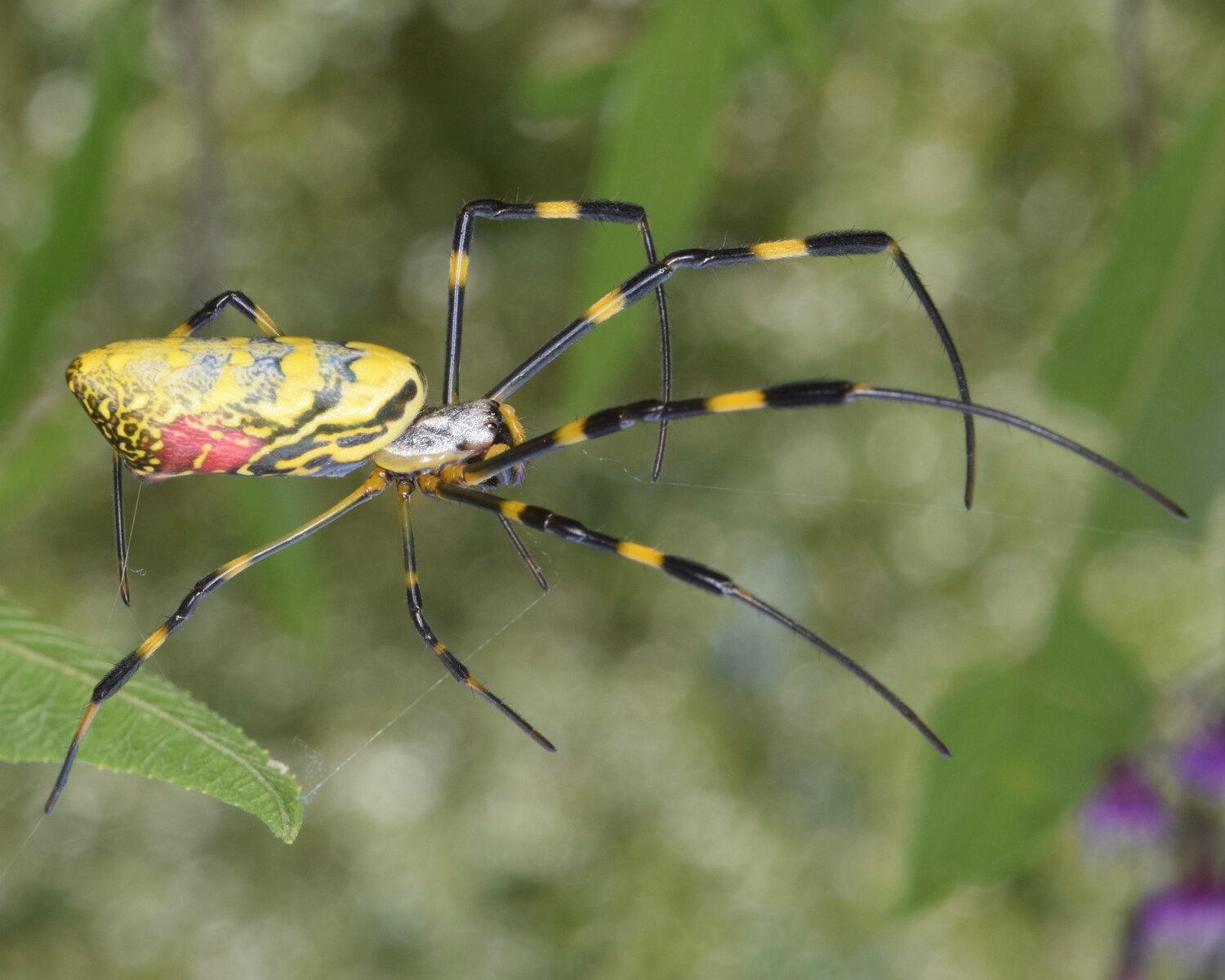Joro spider invasion is a web of lies
The arrival of joro spiders, which are native to East Asia, in the United States has sparked concern and some sensational headlines. According to experts, however, the potential impact on Long Island’s North Shore is likely to be far less dramatic than feared.
The joro spider, Trichonephila clavata, was first documented in North America in Georgia in 2014, and has since spread to several southeastern states. The spider takes its name from a creature of Japanese folklore called a jorogumo, a legendary spider and seductress that can shape-shift into a woman, breathe fire and control other spiders.
There have been reports suggesting the spider’s imminent invasion of northern states, including New York. But John Di Leonardo, an anthrozoologist and the president of Humane Long Island, urges caution and perspective.
“They’re native to Asia, but they were introduced to Georgia and somewhat made their way to neighboring states,” Di Leonardo noted. “There is no evidence that they’ve made their way to New York.”
Despite the dramatic headlines about giant flying spiders, Di Leonardo emphasizes that these descriptions are greatly exaggerated. He explained that the female spiders’ bodies are only up to an inch long, and the males are smaller.
The joro spider, which has a distinctive yellow and blue-black pattern with red markings, has often been described as a venomous and invasive species, but Di Leonardo clarified that while they are venomous, their venom poses no significant threat to humans.
“They’re no more venomous than your average house spider,” he said. “We’re not talking about a brown recluse or black widow.”
Moreover, the term “invasive,” Di Leonardo said, might not even apply to joro spiders. He pointed out that despite the fact that they have been in the U.S. for around a decade, there has been no evidence of negative impacts on local ecosystems.
“They’re exotic and non-native, but there’s no science to show that they’re actually invasive,” he said. “If they were going to have a negative impact, we probably would have seen it by now.”
While fears of the spiders “ballooning” their way north are prevalent, Di Leonardo explained this phenomenon. Ballooning is a dispersal method known among tiny juvenile spiders, not adults. While it certainly helps young spiders spread themselves out, it’s not a means of long-range movement that will carry them across multiple state lines.
“They can’t really fly. I think that’s vastly overstated,” Di Leonardo said. “They can kind of make little parachutes and balloon themselves when they’re only tiny babies.”
In terms of ecological impact, there could even be potential benefits. With rising temperatures contributing to an increase in insect populations, joro spiders might help control pests.
According to a 2021 news release from the University of Georgia, where entomologists have been studying the spiders since they first appeared in the state, they have been observed eating other invasive species, like the brown marmorated stink bug.
“Spiders are our friends, not our foes,” Di Leonardo said. “I think humans have a largely symbiotic relationship with spiders. Of course we do have a natural fear of them, and it’s good to have a healthy fear, but let’s not be paranoid.”
Whether the spiders can survive in colder northern climates remains uncertain. The climate in Georgia is markedly different from New York, and it is still unknown whether the spiders can endure harsher winters. Despite the hyperbolic coverage, Di Leonardo stresses the importance of maintaining a balanced perspective.
“It’ll be a long time before we see them in New York, if ever,” he predicted. “Headlines and social media can easily turn a harmless thing into a perceived deadly threat.”
Di Leonardo also urged focusing on more pressing ecological issues, such as the impacts of animal agriculture on the environment, rather than demonizing these spiders. People have far more reason to be concerned about cross-species diseases and toxic and inhumane husbandry practices, he said, than headlines about giant flying spiders.
Research on Joro spiders is continuing, primarily in Georgia and other states where they have been found. Universities are studying their ecological impacts, though Di Leonardo noted that much of that work is local to areas where joro spiders have established populations.







